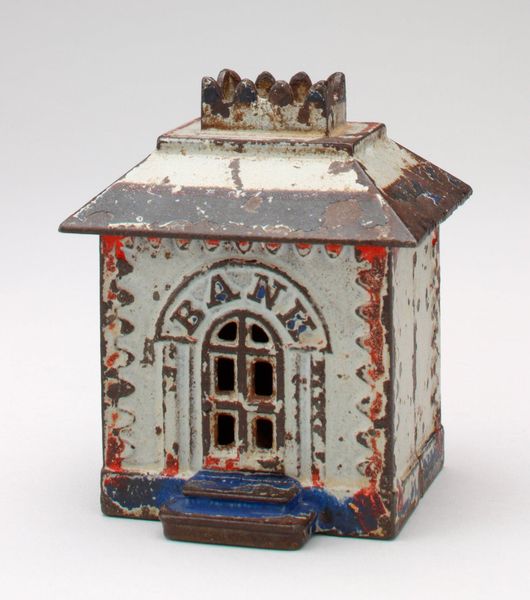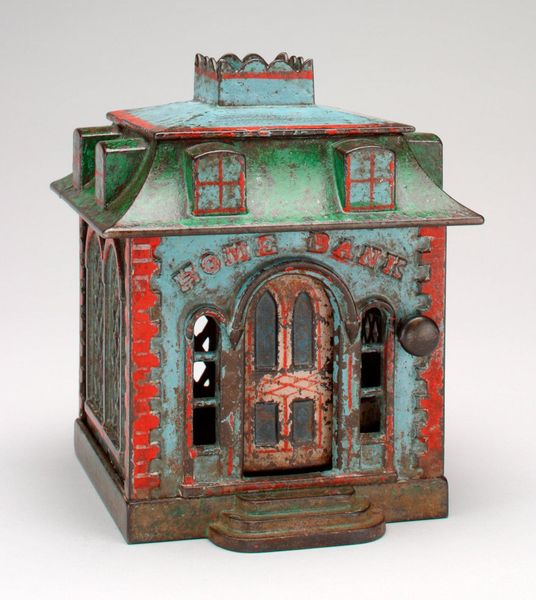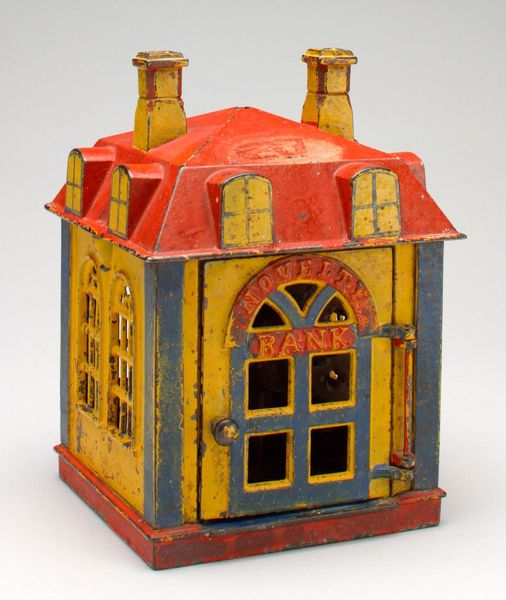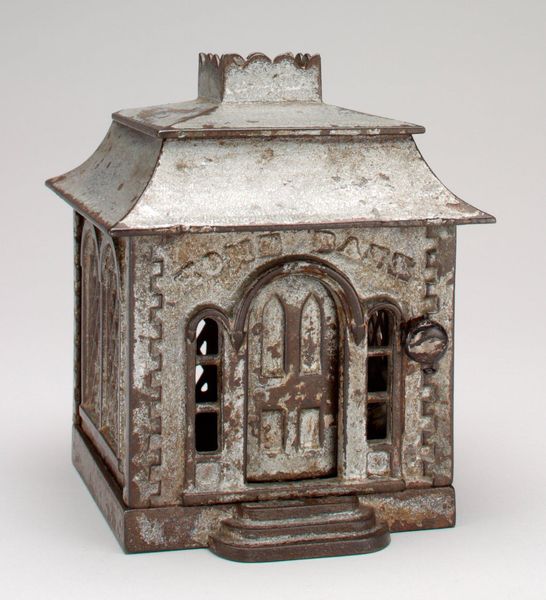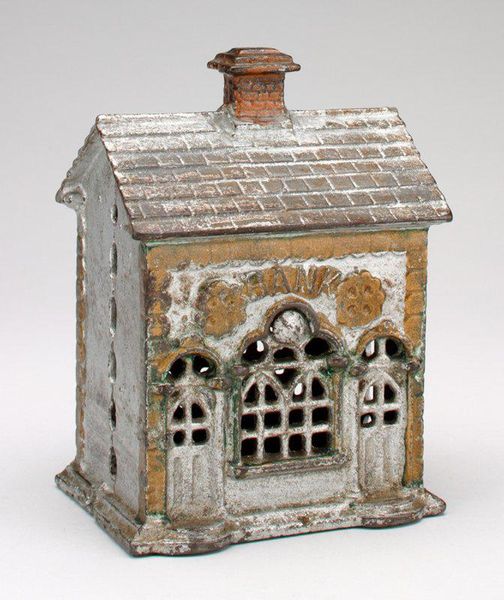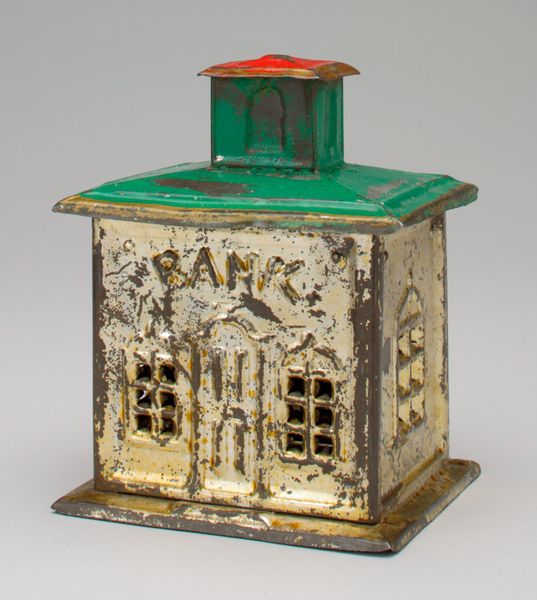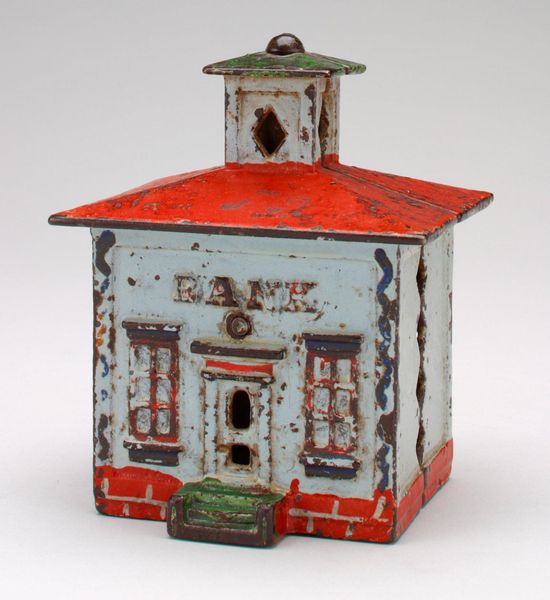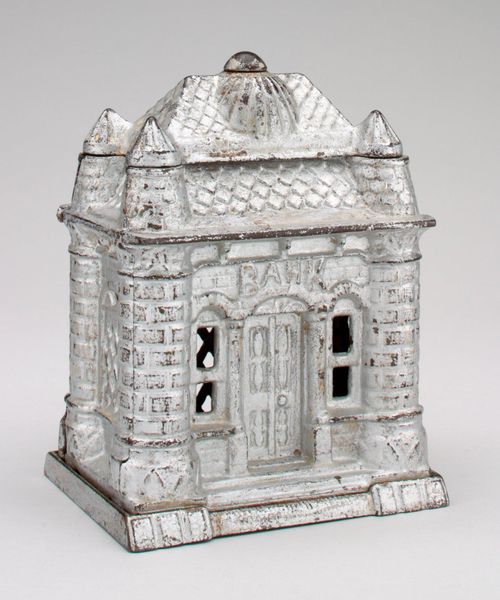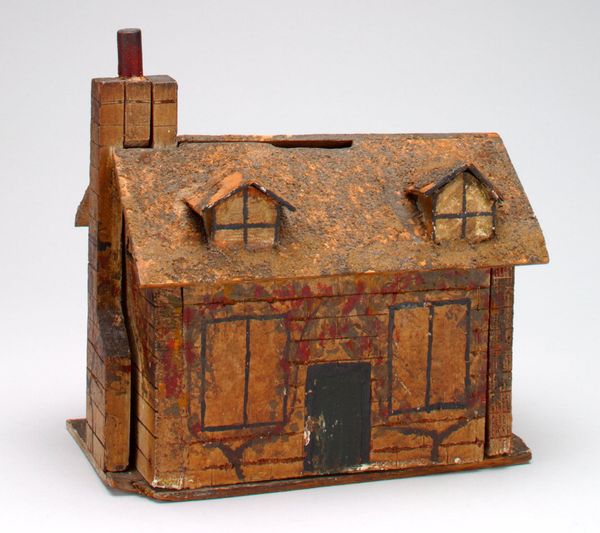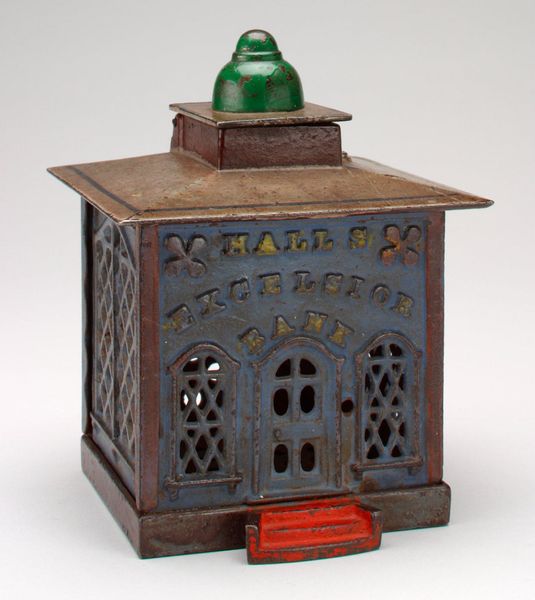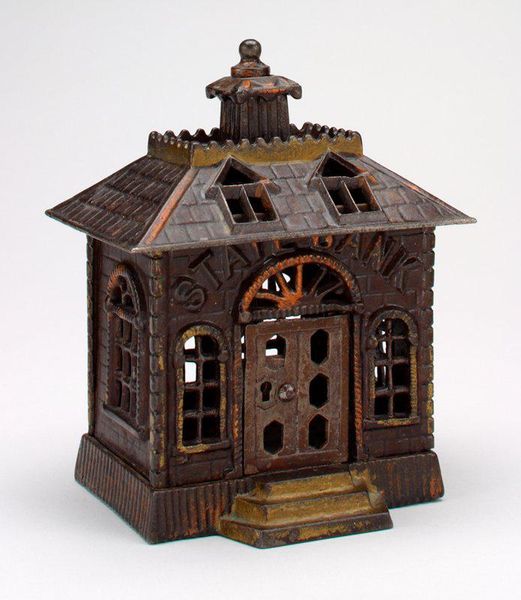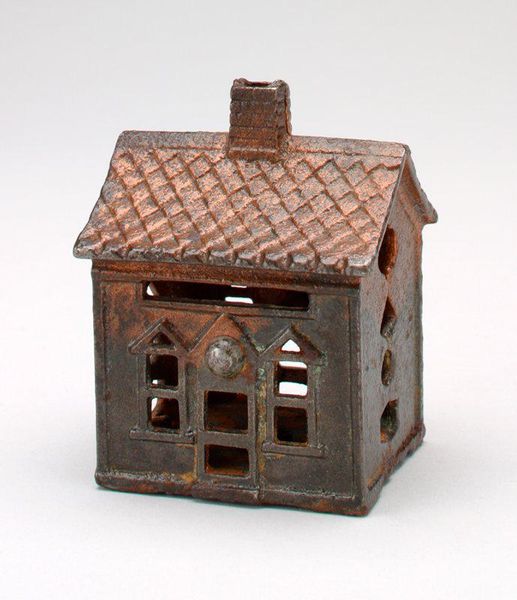
mixed-media, metal, sculpture
#
mixed-media
#
metal
#
sculpture
#
appropriation
#
figuration
#
historic architecture
#
traditional architecture
#
sculpture
Dimensions: 5 1/4 x 4 1/4 x 5 1/4 in. (13.34 x 10.8 x 13.34 cm) (approximate)
Copyright: Public Domain
Curator: Right now, we're looking at "-Magic Bank- mechanical bank" made around 1873 by Henry W. Prouty. You'll find it here at the Minneapolis Institute of Art. Editor: It's utterly charming! Such a fascinating object—the form is quite captivating. A miniature building really grabs my attention through its architecture. Curator: Indeed. This isn’t just sculpture, but a mixed-media piece, predominantly metal, shaped to mimic the architecture of the era. It points to how banking was perceived, institutionalized into something as familiar as architecture. The building becomes a promise for future safety and saving for all, right? Editor: Absolutely. The formal choices mimic that architectural promise of stability, the building as icon. Note the use of blue to contour white lines along the facade, with the arched window providing just a peak inside. Curator: It's designed as a playful object that almost romanticizes this notion, obscuring a very complicated financial situation for workers in 1873. In that sense, I'd say the figuration here actually hints at both financial appropriation and security. Editor: That facade feels quite decorative too. See how the form evokes something almost spiritual—not the cold economics one might expect. Curator: Certainly. By using established imagery of historic architecture, Prouty links emerging banking concepts with trust and community values already set in architectural trends, right? The question then is what purpose that appropriation served. Editor: So interesting, thinking about what lies beneath the pretty surface. The semiotics of architectural mimicry opens doors. Curator: The piece encapsulates a very telling social perspective of banking—perhaps even a critical perspective on financial institution’s exploitation through its use of material worth and design. Editor: Agreed. Seeing art from different points really sparks an understanding on different value judgments!
Comments
No comments
Be the first to comment and join the conversation on the ultimate creative platform.
